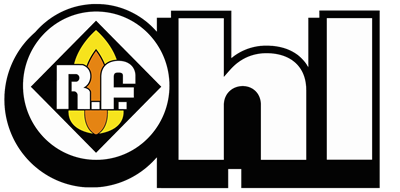Boiler Maintenance Guide
 Don’t believe when people tell you that your old home with radiators is obsolete. For us, we believe that you’re lucky in terms of getting efficient heating by way of consistent heat coming from the radiators. It has been proven for decades that a radiator is and will always be one of the most comfortable ways to heat a home, even though there are many modern oil and gas heating systems preferred by new homes. Unlike other conventional and new equipment, it does not dry the air that much and there’s no such thing as blowing and distributing dust around the house, more like what a forced air system does.
Don’t believe when people tell you that your old home with radiators is obsolete. For us, we believe that you’re lucky in terms of getting efficient heating by way of consistent heat coming from the radiators. It has been proven for decades that a radiator is and will always be one of the most comfortable ways to heat a home, even though there are many modern oil and gas heating systems preferred by new homes. Unlike other conventional and new equipment, it does not dry the air that much and there’s no such thing as blowing and distributing dust around the house, more like what a forced air system does.
How Boilers Work
A boiler, radiators, and pipes that connect the boiler to the radiators are going to be filled with water. This mechanism is called a closed system because the water actually does not leave the system and there is no continuous input of the same. In essence, the water will simply circulate. The boiler then heats the water up to about 180 degrees while a pump will push the hot water through the pipes, leading it to the radiators. The radiators will heat up because of the presence of hot water. As a result, the room where the radiator is situated will then be heated. As water leaves the radiator, it cools. It will be sent back to the boiler to be heated once again and the process starts from the beginning.
Maintenance Guide
Maintenance for boiler heating systems begins with the task of bleeding the radiators. This is one thing that needs to be done every year. While the term “bleeding” seems uncomfortable and awkward, it’s actually quite easy. Every radiator or baseboard unit has a small valve which allows you to remove air that entered the radiator. You need to keep the radiators free of air and filled with water so that they’re able to heat more efficiently.
To start bleeding the radiator, you will need a special bleed key. If you don’t have it, you can use a flat heat screwdriver as an alternative. Hold a cup under the opening below the bleed valve. Next, turn the bleed key counterclockwise. You will then hear a “hiss” of air, which is a sign that it already has left the radiator. When air stops coming and water begins to go into the cup, you can now close the valve by turning the bleed key clockwise. Do not be alarmed if the water in the cup is black since it’s a normal occurrence.
Boiler Pressure Inspection
You must know that checking the boiler pressure is a bit more complex and challenging compared to bleeding. Therefore, we recommend you enlist the help of a professional HVAC contractor if you haven’t tried it before.[/vc_column_text][/vc_column][vc_column width=”1/6″][/vc_column][/vc_row]
